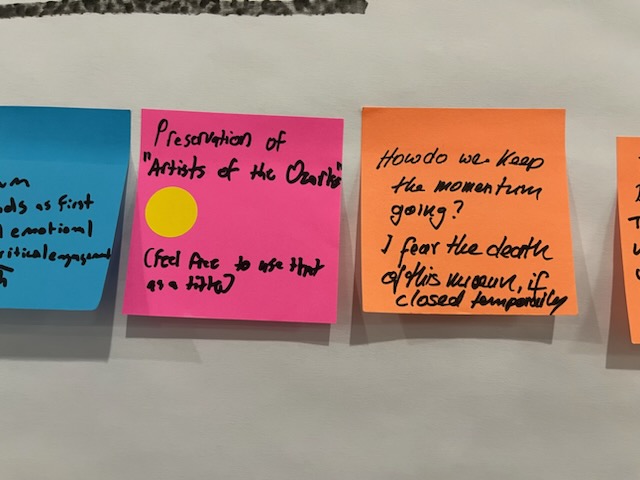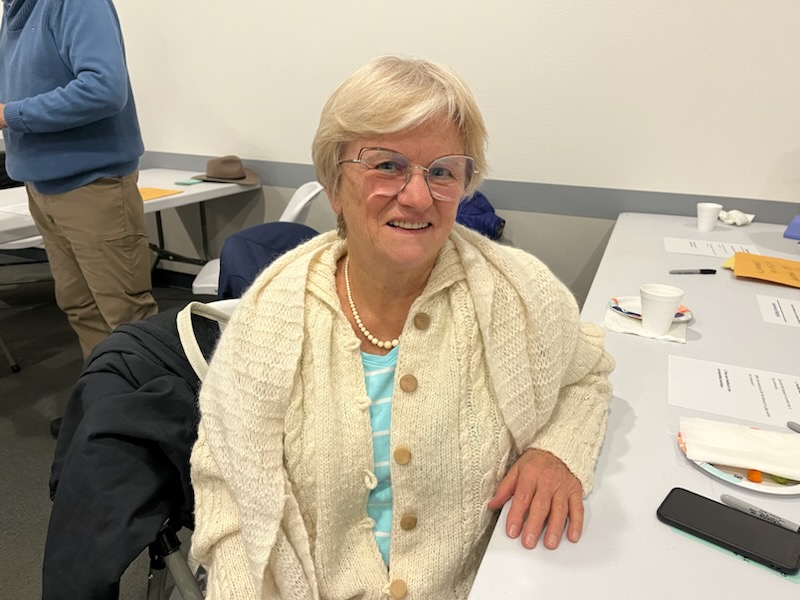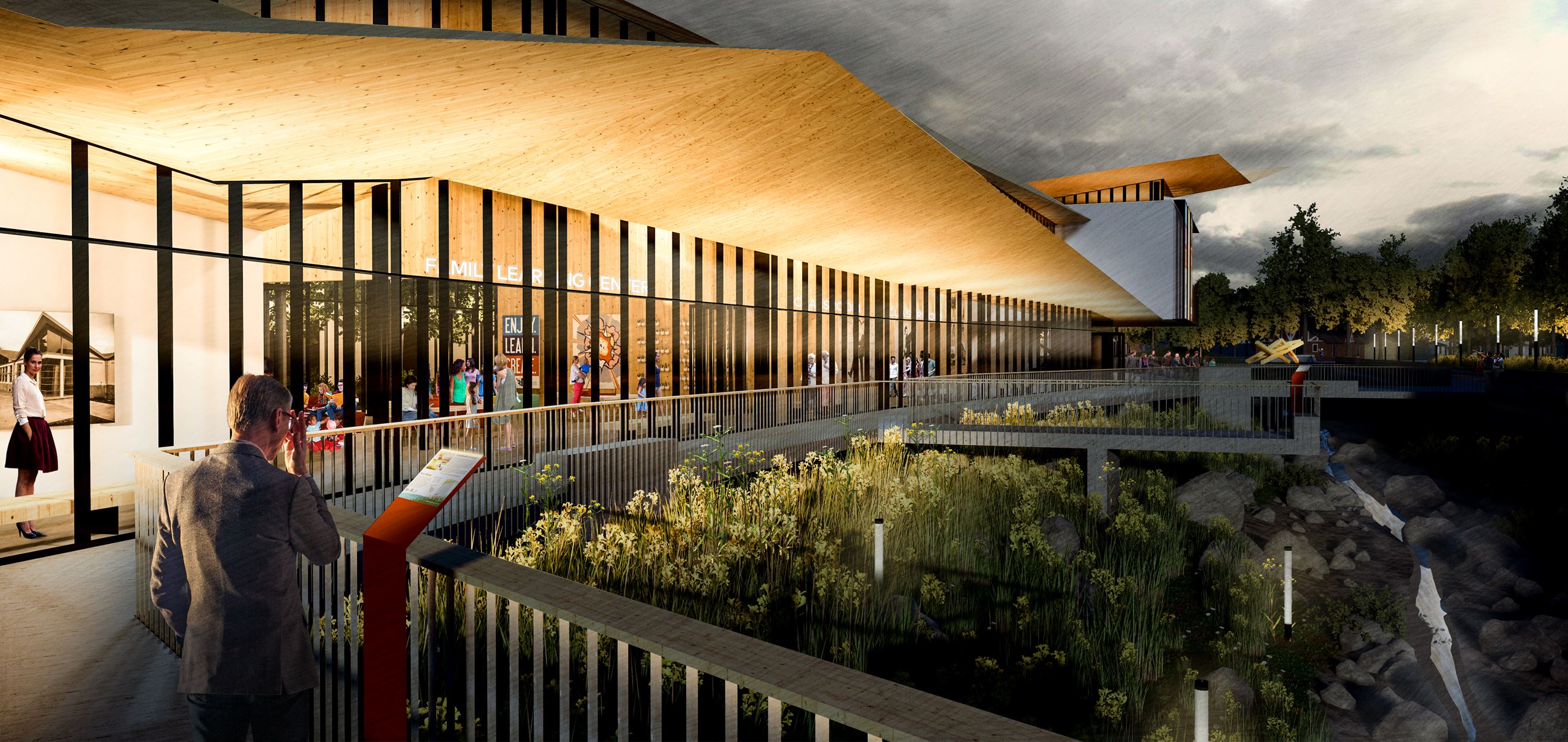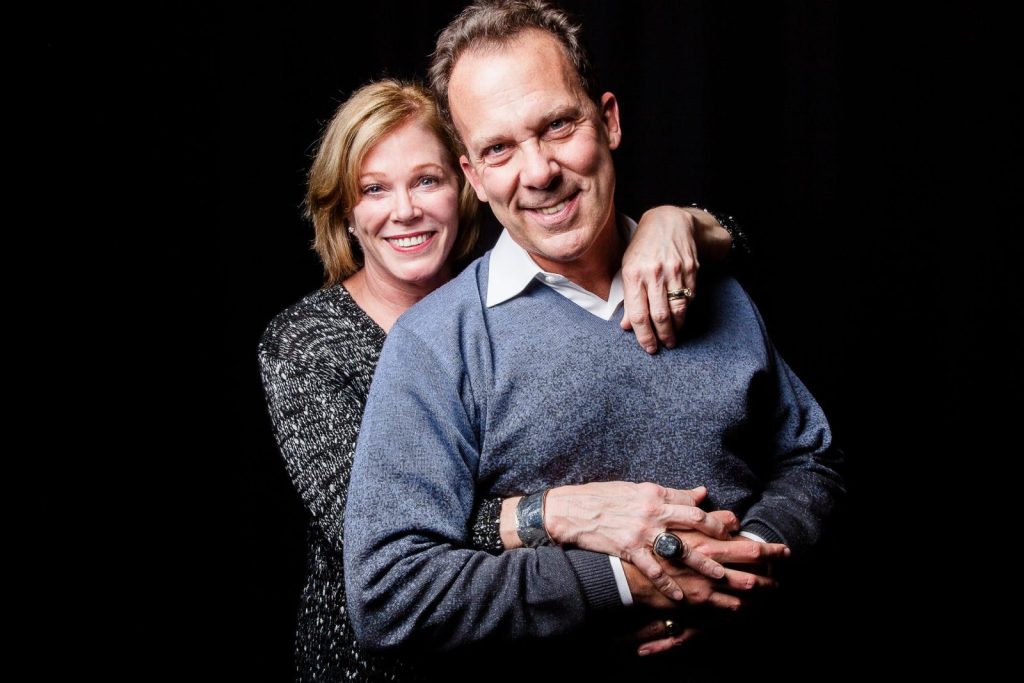IN-DEPTH
The 2028 Campaign to help fund an ambitious renovation of the Springfield Art Museum revs up this winter as visitors grapple with some recent, heart-stopping realities: The museum is slated to close in September for three years, and construction originally designed in 2018 to cost an estimated $25 million could reach $32 million by the time the building reopens in 2028 for its 100th anniversary. Another roughly $4 million has already paid for the Fassnight Creek project and museum grounds work.
Museum visitors will see changes beginning July 1, when staff begins relocating 10,000 contemporary and centuries-old artworks to an on-site storage room specially fitted with humidity, light and temperature controls.
First to go are permanent collection objects from the “Creating an American Identity” exhibit in the Museum’s Musgrave Wing. Remaining exhibitions, including “Watercolor USA” will stay in the museum’s galleries until Sept. 1, and then be returned to participating artists.

Art museum Director Nick Nelson lays out the schedule: “Our goal is to have all work in storage by the end of September 2024 and the facility ready for construction by November 1, 2024, with construction mobilization anticipated to begin December 2024.”
The campaign has raised nearly $16 million, about $4 million of that has already funded the Fassnight Creek project and museum grounds work. The remaining $12 million will cover the first phase of construction, which could be determined by April, he says.
The recent news has some observers and stakeholders asking, “Why does it have to be closed for three years?” Nelson’s response: The project is just that complex.
Contractors will face renovating a 52,000-square-foot structure that was built to 1958 standards and grew with three additions over the decades — so it’s essentially four buildings. Some run on their own mechanical systems. All were appropriate to their time, but some of the roof, walls, floor and glazing no longer meet current construction standards or code requirements, according to research by the 2018 designers BNIM architects.
One of the goals of the 2018 design “was to bring all those buildings together and have them sort of make sense and work together,” Nelson says.
During demolition and renovation, power and water throughout the complex will be affected, and contractors will have to keep electricity flowing to the storage vault to protect the valuable art. No suitable facility of that size and design exists elsewhere in Springfield, Nelson says. Building one offsite is off the table, financially and logistically. Building back will require technical skills to recreate those environmental controls to protect the art from damaging dust, vibration and messy humans.
“We’re still working on defining the scope of the project, the phasing and other things,” Nelson says. “But we know in talking with other museums that have undergone renovation, what we heard over and over is, ‘We thought it was going to take this long, but it took this long.’
“What we’ve been trying to do is get as much information out as possible about what our plans are. And then sort of ‘under promise and over deliver’ on timelines.”

Still open for business
For the record, Nelson says, on the first day the museum closes, “We’re still open for business, just not here at 1111 E. Brookside Drive.”
He’s negotiating with community partners and sites to serve as temporary spaces where his 18-member staff can keep working and offer art-making classes, presentations and events. Nelson will continue paying staff and the temporary leases with his $2 million annual budget. He will realize some savings from closing the building. The museum is a City of Springfield department and general admission is free.

The popular All-School Art Exhibit for Springfield Public Schools students will continue, just somewhere else for the time being, Nelson says. Staff will again offer art “takeout bags” popular during the pandemic.
And people can always take a virtual tour to revisit their favorite pieces. (Nelson’s picks: the portraits of early Springfield residents Fanny Smith Crenshaw and husband L.A.D. Crenshaw by George Caleb Bingham.)

But museum docent Meike Aton says an important program for school children will suffer during the closure. She is one of a dozen docents who provide lecture-tours each fall for fifth-grade students, and occasional tours through the year. She expressed her disappointment at a public meeting Jan. 22 that took ideas for a strategic plan and programs to keep people engaged during the closure.
“I am a teacher by nature and an artist, so I want to connect the kids with the museum, with the artwork regardless of how intellectual it is,” Aton said. “I want them to feel like, ‘Oh! I like this. I want to come back. I want to see this. I want to see more!’
“I fear all of the momentum that has been building over the last few years will be gone,” Aton said. “And my question is, ‘Is there no way of keeping parts of the museum open, on a rotating basis?’ We’re going to kill everything.” She added, “I don’t want to accept that.”

A delicate business
Partial closure isn’t possible, safe or efficient, Nelson explains.
“Based on the project and just the way the museum is situated, construction is going to have a big impact on access to the site.” Museum staff before Nelson’s arrival learned that from experience.
“When the 2008 wing was added on the far west, the museum stayed open and people had to go through the loading dock to get to the museum,” Nelson says. “That presented a security risk and also a visitor safety risk.”
Contractors require space and flexibility to work where needed, and that includes shutting off electrical or water systems when necessary without concern for museum staff, visitors and scheduled programs, he says. It can make a project move smoothly, more efficiently — and potentially faster.
Moving the “art” out of an “art museum” is a delicate matter.
This is the permanent home for about 10,000 art objects representing thousands of years of culture. Special collections include 19th, 20th and 21st century American paintings, watercolor, sculpture and prints. The permanent collection contains works of American art dating to the 18th century. Other areas house textiles, tools and implements, decorative arts, pottery and ceramics from Europe, Asia and the Americas.
“This isn’t like working in other spaces,” Nelson says. “Oftentimes, the issues (during renovation) that may damage artwork are not somebody dropping it,” Nelson says. “It’s these little tiny vibrations that disrupt a layer of paint that’s a micron thick on a canvas.” Each incident of damage has a cumulative effect, he adds, “It would be like a person who never heals from a lifetime of sunburns.”

Must-haves and maybes
The 145-page museum redesign by BNIM architects in 2018 gave the public its first glimpse of what could be — a “jumping-off” point,” as Nelson describes it.
It figured in how people use spaces in today’s world, the museum’s mission and needs, and what Nelson identifies as key goals: a new art education and family art labs, new art classrooms and studios, refreshed and expanded galleries, multi-purpose, modular event spaces, and a strong physical and visual connection between the museum, landscaped grounds and amphitheater with pedestrian and bike paths to Phelps Grove Park and the Greenway Trail.
Other features in the 2018 design could come in later phases, others could be redesigned, others may never make the cut.
“We’re still at a place where some of those things are being defined, so we’ll have to look at budgets,” Nelson says.
Those features include the exterior design, a multi-story glass-and-steel structure with a soaring, angular roofline, expansive, airy indoor spaces and a landscaped outdoors. The footprint would expand modestly, from 52,000 to about 72,000 square feet, by making more efficient use of space for extras such as a cafe that opens to the outdoors, and a new pedestrian “boulevard” along the southern border of the museum grounds.
It also describes creating a flexible, level event space as an alternative or in addition to the existing 400-seat auditorium. While used by a host of community groups and nonprofits, it doesn’t meet ADA standards adopted after it was constructed because the rake, or slope, of the seating floor is too steep, Nelson says.
“I think we’ll have space where we can gather people and provide educational programs, community programs and events,” Nelson says. “What that looks like — that is what we’re kind of still working through.”
Museum-goers’ habits have changed, he says. They don’t require space for an art library — the Springfield museum’s research library went the way of a needed meeting room. They want amenities and flexible spaces for arts and cultural events, meetings and accessible to all people, he says.
“The community has changed. The world has changed,” Nelson says. “And if we’re still living in a building that’s designed for the past, you can see where it can cause some problems. We’re trying to create something that’s flexible enough that it can live into the future.”

What it could cost
The $24.5 million construction cost estimate for the 2018 site plan was updated in 2022 to just under $32 million due to post-pandemic inflation, Nelson says. It included design fees, soft cost, furniture, fixtures, and equipment, all of which were calculated at 30% to construction cost. Going forward, costs may be variable on things like finishes and HVAC equipment. Mechanical systems like climate control can have a significant impact on the budget depending on the type of system chosen.
The 2018 estimate represented all phases being completed, and included demolition of existing parking and additional parking, extension of the Hatch Lawn to the museum, walkways and trails, and installation of sculptures.
It did not account for work completed since then — the roughly $4 million Fassnight Creek “re-naturalization” and expanded parking — which when added to the estimate pushes the entire project estimate to over $35 million.
“The museum is currently working to further refine the scope and phasing of this project considering funds currently available and will continue raising funds with the goal of completing the entire project in a timely manner,” Nelson says.
Of the $16 million in public funds and private donations raised so far, the museum spent about $4 million in 2021 to complete the first phase of the site plan — work on the museum grounds including the Fassnight Creek “naturalization” project, improvements to the amphitheater and parking lots, a trail connection to the Fassnight Creek Greenway Trail, and outdoor sculpture acquisitions.
A major overhaul of the creek bed as it wends past the museum was required by FEMA to protect the museum, its contents and nearby residents from a 100-year and 500-year flood. That part of the project was funded with $2.3 million through the City of Springfield’s ¼-cent Capital Improvement Sales Tax, a Missouri Department of Natural Resources Stormwater Grant, and a Missouri Department of Conservation Native Planting Grant.

How to pay for it
Dr. Tom Prater, who co-chairs the 2028 Campaign with his wife Kim, acknowledges the steep cost but is focused on the benefits it will bring to the community.
“This is something seen in cities around the United States,” Prater says. “If you’re going to be a progressive, modern city without progressive, modern amenities like art museums, libraries, performing arts and recreational facilities like trails, our city will fall behind. We won’t move forward as a city without those things.”
The campaign so far has raised nearly $16 million in private and public funds, says museum development and fundraising officer Kate Francis. About $4 million of that went to the grounds improvements, expanded parking and improvements to Fassnight Creek.
Where fundraising stands so far (click to expand)
The 2028 Campaign, named for the Springfield Art Museum’s 100th anniversary, launched in 2018 with a gift from the Juanita “Kaye” Foster-Gibson Family to complete the site plan. The campaign has raised just under $16 million so far in public funding and private donations.
Beginning in 2021, it spent about $4 million to complete the first phase of the site plan, which funded work on the museum grounds including the re-engineering adjacent Fassnight Creek — the “naturalization” project — improvements to the amphitheater, additional parking, a trail connection to the Fassnight Creek Greenway Trail, and outdoor sculpture acquisitions. Funds for those completed projects came from the City of Springfield, the Sunderland Foundation, Art Museum Reserve Funds, and several state and federal sources including the Missouri Department of Natural Resources Stormwater Grant, Missouri Department of Conservation Native Planting Grant, Environmental Protection Agency 319 Grant, and 1/4-cent Capital Improvement Sales Tax. A major overall that re-engineered the creek bed was required by FEMA to withstand a 100-year and 500-year flood.
- In March 2022, the campaign announced a $5 million leadership gift from the Sunderland Foundation.
- In July 2022, the museum was awarded $3 million in ARPA funding, American Rescue Plan Act, through the City of Springfield.
- In October 2022 while celebrating completion of grounds improvements, the Fassnight Creek naturalization and parking lots, the museum announced $800,000 in commitments to the campaign, including a $500,000 gift from the Hatch Foundation to name the Hatch Foundation Lawn; $100,000 from campaign co-chairs Drs. Tom and Kim Prater; $100,000 from Johnny and Jeanie Morris to name a pedestrian bridge; and $100,000 from an anonymous donor.
- In April 2023, it received a $2.75 million state ARPA grant from the Missouri Department of Economic Development.
With the holidays over, information and fundraising efforts will resume this winter with public and private donor events, Prater says.
Get more information
Find more information on the campaign on the museum website. If you are interested in supporting the 2028 Campaign financially or otherwise, please contact Kate Francis, Museum Affairs Officer for Fundraising and Development, at kate.francis@springfieldmo.gov.
Community members have also voiced their ideas through electronic and in-person surveys conducted by Keen Independent Research. The goal is to develop a strategic plan and how it should serve the community, and integrate diversity, equity, accessibility and inclusion when the museum reopens. Completion deadline is June 30.
On the horizon, the Springfield City Council is considering a ballot measure for a ¾-cent sales tax to take effect following the expiration in 2025 of a pension sales tax of the same value. As council members consider how they would divvy up the money, some people have suggested funding “transformational projects” like the art museum.

Prater agrees. “This project will require additional support from the city. Whereas using general budget dollars could affect other spending priorities including police and fire services, designating some of the tax renewal for funding would not,” Prater says. “Kim and I feel strongly that some of the ¾-cent tax renewal being considered should go toward the museum. This fits into the Forward SGF plan that council endorsed.”
Prater adds, “It’s unlikely we can complete this modernization project solely with private donations and the current public revenue sources. I’m optimistic that the public will respond positively if asked to direct existing sales tax money toward the Art Museum. Taxpayers here are responsible and forward thinking. So ask, then deliver. We have a good history of doing just that in Springfield.”

Reimagining a civic asset
A theme running throughout the museum project is “connections” — not only how visitors engage with art and education, but how the museum can connect the indoors to the museum grounds outside. In Nelson’s sights: The re-naturalized Fassnight Creek, future pedestrian walkways, the amphitheater, Phelps Grove Park, the Fassnight Greenway Trail.
“We sit in this really wonderful spot, in the middle of the city, geographically,” Nelson says. “We’re right next to this incredible, historic park, surrounded by green space and this wonderful neighborhood. We saw the opportunity for the Fassnight Greenway Trail to come to the museum. So with all of that together, we said ‘What if we don’t think about just the museum, but think about how all this connects?’
“If you think about the (proposed) Grant Avenue Parkway… Jordan Creek downtown, I think this is another one of those quality-of-place projects that’s really important to make our community a place where people want to live and learn and thrive.
“We’re just excited about the possibilities where we go with it and where we end up with it and how it will serve the community.”


